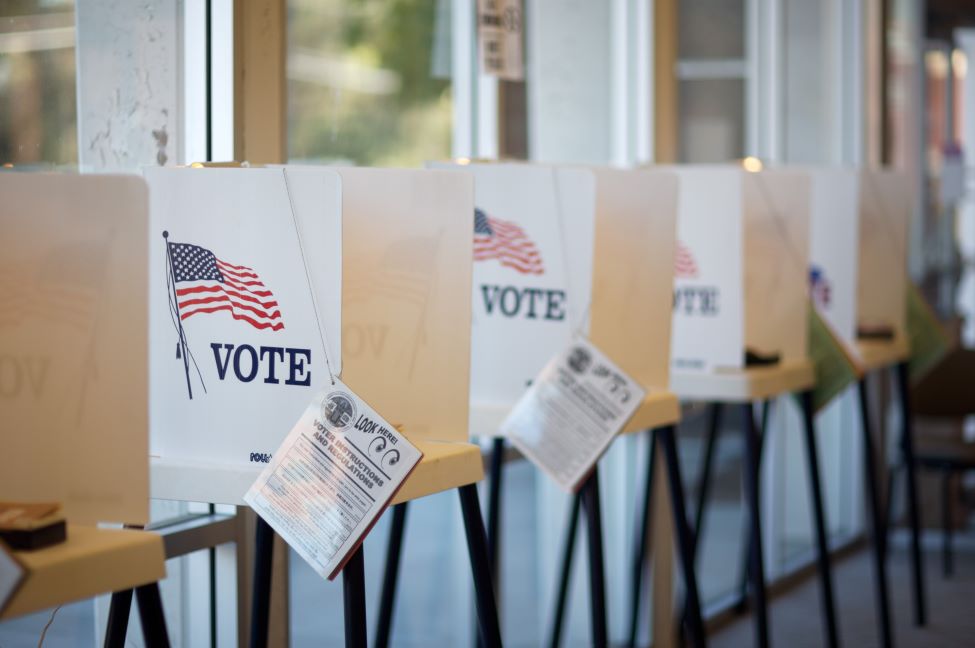FAU and Mainstreet Research Poll Shows Tight U.S. Presidential Race

The 2024 election is around the corner. What are American's thinking?
Former U.S. President Donald Trump takes the lead over incumbent U.S. President Joe Biden by 4 percent, according to the latest findings from the FAU Political Communication and Public Opinion Research Lab (PolCom Lab) and Mainstreet Research.
Battleground America: Trump Holds Slight Edge Over Biden in National Poll
According to the national survey, 41 percent of registered voters expressed support for Trump, while 37 percent favored Biden. Another 13 percent opted for alternative candidates while 9 percent remained undecided. These findings echo recent polls showing Trump consistently leading Biden by margins ranging from 1 to 4 percent.
Demographic Divide: Trump’s Lead Reflects Shift in Voter Support
Demographic analysis of the poll data highlights the role of racial and ethnic identity in shaping candidate support. Although Biden maintains strong backing from African Americans at 63 percent, his support among white voters (32 percent) and Hispanics (33 percent) is notably lower. Conversely, Trump garners significant support from white voters (48 percent), Hispanics (41 percent), and 17 percent of African Americans.
Further examination reveals Trump’s strong hold on white non-college graduates, with 52 percent favoring him over Biden.
“Former President Trump is maintaining a commanding lead with white non-college-educated voters. This group has been steadfast and largely unmoved in their support of the former president,” said Kevin Wagner, Ph.D., professor of political science at FAU.
Among Democrats who voted for their own party candidate in 2020, 72 percent chose Biden in the poll, while 86 percent of Republican voters did so for Trump.
“Trump commands substantively higher support from his own party members than Biden, which could be a strong asset for Trump but poses a serious threat to Biden,” said Dukhong Kim, Ph.D., associate professor of political science at FAU. “To improve his chances of victory, Biden must enhance support among African Americans and Hispanics, traditional Democratic Party constituencies, while also strengthening his appeal among party members to increase his chances to win the presidency.”
With 79 percent of voters expressing a strong likelihood of maintaining their current choice in November, Biden faces the challenge of swaying the remaining 21 percent who are undecided.
Among younger cohorts aged 18-34, there’s a notable trend of 20 percent expressing uncertainty about maintaining their current choice, compared with older cohorts, where only 4 percent of those aged 65 and over and 8 percent of those aged 50-64 share similar sentiments.
In line with the outcome of the presidential election vote choice, the approval rating of Biden’s performance as president reflects a challenging scenario. Currently, 38 percent approve of his performance (23 percent strongly approve and 15 percent somewhat approve), while 57 percent disapprove (38 percent strongly disapprove and 19 percent somewhat disapprove). Of note, his job approval rating closely mirrors that of Trump’s at 34 percent in January 2020.
Democrats Edge Ahead: FAU Poll Reveals Slight Lead in Congressional Elections
“Congressional elections are again likely to be fairly close suggesting that either party may control the House in the next year,” said Wagner.
The Democratic Party holds a slight advantage over the Republican Party, with 39 percent of voters favoring Democrats compared to 36 percent for Republicans. Once again, racial and ethnic factors play a significant role, with African Americans showing stronger support for Democratic candidates (62 percent) than whites (33 percent) and Hispanics (48 percent). While there are differences in the relationship between partisan voters and their choice for representatives, the magnitude of the difference (6 percent) is not as big as the choice for the presidential candidate (14 percent).
This poll was conducted from Friday, Feb. 2 to Saturday, Feb. 3, among a sample of 1,180 adults, 18 years of age or older, living in the United States. The survey was conducted using a text message survey of registered voters and an online panel of registered voters, so a margin of error cannot be assigned. The survey is intended to represent the voting population in United States.
-FAU-
Latest News Desk
- FAU Honors 2024 Hall of Fame Inductees and Distinguished AlumniFlorida Atlantic University Alumni and Community Engagement recently hosted its annual Hall of Fame & Distinguished Alumni Award Ceremony and Reception.
- FAU Announces Winners of 2024 'Three Minute Thesis (3MT®) Competition'Florida Atlantic University has announced the winners of the eighth annual Three Minute Thesis (3MT®) Competition hosted by the Graduate College
- Study Unveils Balance of AI and Preserving Humanity in Health CareCross Country Healthcare and FAU's Christine E. Lynn College of Nursing have launched the fourth annual Future of Nursing Survey that reveals nursing perspectives on AI and compassionate care.
- FAU Showcases Entrepreneurship, Innovation at eMerge AmericasThree colleges within Florida Atlantic University attended eMerge Americas in Miami Beach recently to showcase student innovation and commitment to entrepreneurship in the South Florida tech industry
- FAU Awarded Grant to Examine Role of Pet Dogs on Military AdolescentsFAU nursing researchers will investigate pet dog ownership on adolescent resilience and well-being to counter the effects of military-specific stressors and promote positive outcomes.
- Three FAU Students Recognized as 2024 Goldwater ScholarsA trio of Florida Atlantic University students has been named as 2024 Goldwater Scholars, the third consecutive year FAU students have earned this honor.






